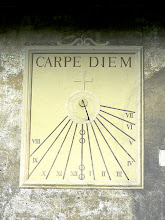

PHOTOS :
Nº2.- Façade of Egyptian Hall, in LONDON, Piccadilly 1812
Nº1.- Egyptian Hall,(int.)redesigned by JB Papworth, 1819
_______________________________________________________
EGYPTIAN HALL
*************
The Egyptian Hall in Piccadilly, London, was an exhibition hall built in the ancient Egyptian style in 1812, to the designs of Peter Frederick Robinson.
In 1905 the building was demolished to
make room for blocks of flats and offices.
------------------------------------------
The Egyptian Hall in Piccadilly, London, commissioned by William Bullock as a museum to house his collection (which included 'Curiosities' brought back from the South Seas by Captain Cook), was completed in 1812 at a cost of £16,000.
It was the first building in England to be influenced by the Egyptian style, partly inspired by the success of the Egyptian Room in Thomas Hope's house in Duchess Street, which was open to the public and had been well illustrated in Hope's Household Furniture and Interior Decoration (London, 1807).
But, unlike Bullock's Egyptian temple in Piccadilly, Hope's neoclassical façade betrayed no hint of the Egyptianizing decor it contained.
Detailed renderings of various temples on the Nile, the Pyramids and the Sphinx had been accumulating for connoisseurs and designers in works such as:
·Bernard de Montfaucon's, ten-volume "L'Antiquité expliquée et representée en figures"(1719-1724), which reproduces, methodically grouped, all the ancient monuments,
·Benoît de Maillet's "Description de l'Égypte"(1735),
·Richard Pococke's "A Description of the East and Some Other Countries"(1743),
·and Frederic Louis Norden's "Voyage d'Egypte et de Nubie"(1755); which first volume of the magisterial Description de l'Egypte (1810) had recently appeared in Paris.
The plans for the Hall were drawn up by architect Peter Frederick Robinson.
Bullock, who had displayed his collection in Sheffield and Liverpool before opening in London, used the Hall to put on various spectaculars, from which he made money from ticket sales.
The museum was variously referred to as the London Museum, the Egyptian Hall or Museum, or Bullock's Museum.
The Hall was a considerable success, with an exhibition of Napoleonic era relics in 1816 including Napoleon's carriage taken at Waterloo being seen by about 220,000 visitors; Bullock made £35,000.
In 1819, Bullock sold his ethnographical and natural history collection at auction and converted the museum into an exhibition hall.
Subsequently the Hall became a major venue for the exhibiting of works of art; it had the advantage of being almost the only London venue able to exhibit really large works.
Usually admission was one shilling.
In 1820, The Raft of the Medusa by Théodore Géricault was exhibited from June 10 until the end of the year, rather overshadowing Benjamin Robert Haydon's painting, Christ's Entry into Jerusalem, on show in an adjacent room; Haydon rented rooms to show his work on several occasions.
In 1821, exhibitions included Giovanni Battista Belzoni's show of the tomb of Seti I in 1821, and James Ward's gigantic Allegory of Waterloo.
In 1822, a family of Laplanders with their reindeer were imported to be displayed in front of a painted backdrop, and give short sleigh-rides to visitors.
The bookseller George Lackington became owner of the Hall in 1825 and went on to use the facilities to show panoramas, art exhibits, and entertainment productions.
The Hall became especially associated with watercolours.
The old Water-Colour Society exhibited there in 1821–22, and it was hired by Charles Heath to display the watercolours commissioned by from Joseph Mallord William Turner forming Picturesque Views in England and Wales.
Turner exhibited at the Hall for a number of years and it was also used as a venue for exhibitions by the Society of Painters in Water Colours.
In the "Dudley Gallery" at the Egyptian Hall, the valuable collection of pictures belonging to the Earl of Dudley was deposited during the erection of his own gallery at Dudley House in Park Lane.
The room gave its name to the Dudley Gallery Art Society (also known as The Old Dudley Art Society) when they were founded in 1861 and used it for their exhibitions.
It was the venue chosen for their first exhibitions by the influential New English Art Club.
By the end of the 19th century, the Hall was also associated with magic and spiritualism, as a number of performers and lecturers had hired it for shows.
It was also the venue chosen for the showing of some of the very first films (or animated photographs) to be shown, including those of Albert Smith relating his ascent of Mont Blanc.
Later, when the hall came under the control of the Maskelyne family, a more settled policy was adopted and it soon became known as England's Home of Mystery. Many illusions were staged including the exposition of fraudulent spiritualistic manifestations then being practised by charlatans.
In 1905 the building was demolished to make room for blocks of flats and offices at 170–173 Piccadilly.
Muirhead Bone captured its demise in his work "The Dissolution of Egyptian Hall".
The Maskelynes relocated to the St. George's Hall in Langham Place, which became known as Maskelyne's Theatre.
====================
_____________________________
I must remember to see next :
Ancient Mexico
Egyptian Revival architecture
Egyptian revival decorative arts
________________________________
and:
Adrienne L. Kaeppler, "Cook Voyage Provenance of the 'Artificial Curiosities' of Bullock's Museum"
Man, New Series, 9.1 (March 1974), pp. 68-92.
_____________________________________________
......


0 Comments:
Post a Comment
<< Home